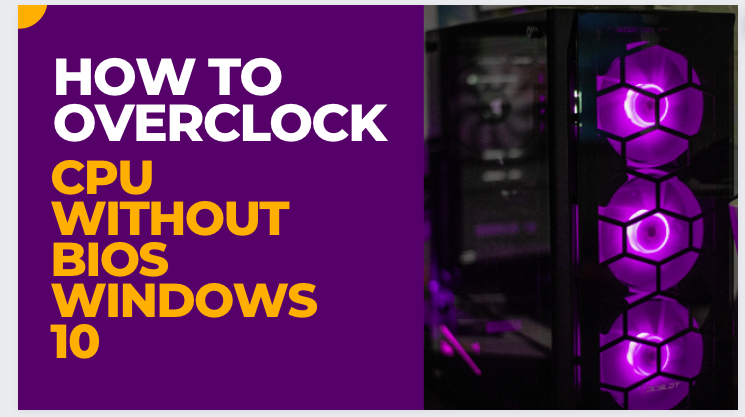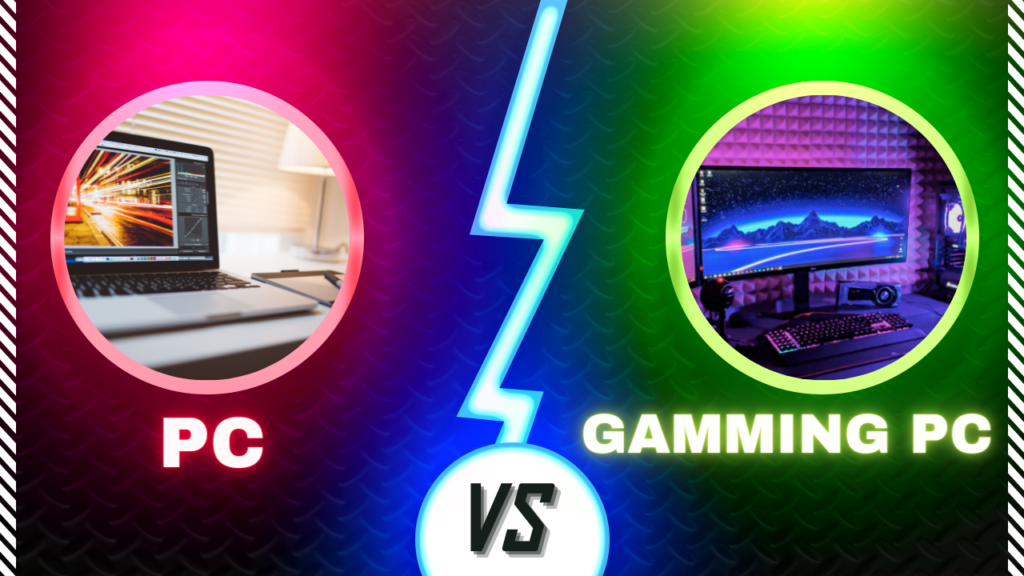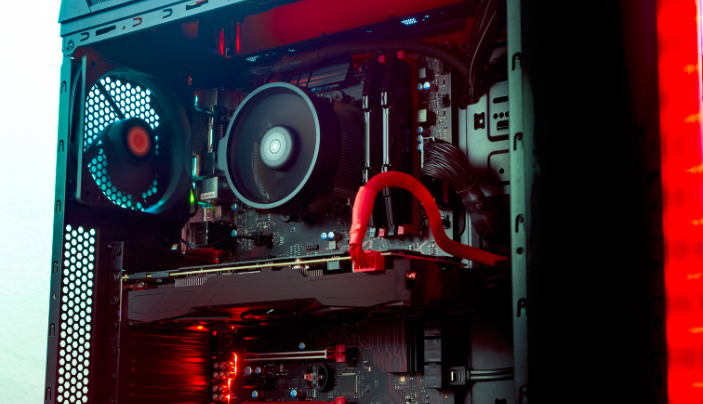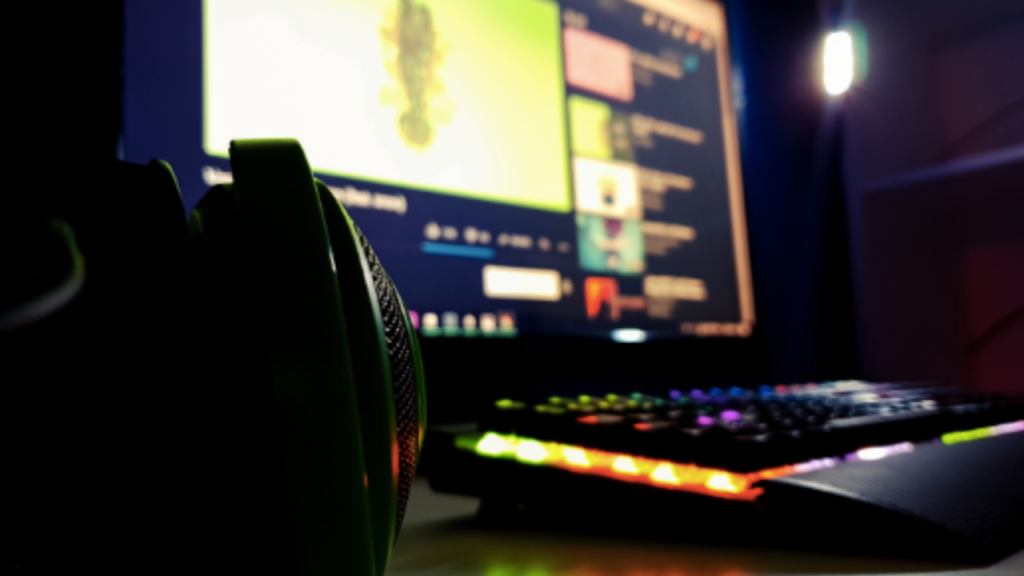Overclocking, if done right, allows you to improve the performance of your PC without the expensive upgradation of the PC components. In overclocking cpu without bios windows 10, you are basically pushing your computer’s processor to its limits. Now you wonder, is there a safe way to do so? Well, yes. In this article, we will discuss how to run your computer on a stable overclock and how to achieve it in the first place.
Identify Your CPU Components
Before you overclock your PC, you need to verify if your PC’s hardware can handle overclocking. You can check if your processor’s chip is overclockable or not, by reading the manufacturer’s description about it.
Once you confirm that your processor chip is clickable, check your motherboard model. What you need to look for is whether your motherboard has heat regulators qualified enough to withstand the heat produced through overclocking. You can find this information by reading the manufacturer’s description of your motherboard’s model.
Safe temperatures for your hardware components
You should be aware of the range of temperatures safe for your PC. As the general range keeps changing over the years as the hardware improves, you still need to know the safe temperature range of your exact hardware models. If you want to follow the general range, then be sure to not increase your processor’s temperature above 95 degree C. Keeping the temperature around 85 degrees C is the ideal condition.
In order to make your heat dissipation system more reliable, you need to clean it thoroughly, using a cloth with a can of compressed air. You need to avoid using a vacuum cleaner because it produces a dangerous amount of static current. Another thing you can do is to replace your processor’s thermal paste with a new one.
How to safely overclock your processor
Before overclocking your PC, you should have knowledge of the internal components of your PC. It is required because you will have to adjust these components manually in order to minimize the damage caused by overclocking.
Overclocking Your CPU
There are several ways you can overclock your CPU. These are stated as follows
- You can overclock your CPU by increasing the multiplier. A multiplier represents the number of processing cycles a CPU runs in one bus speed cycle. This is not effective in most cases as the CPUs usually come with locked multipliers.
- You can increase the clock speed of your PC by increasing the bus speed, which is the core clock cycle. This needs to be done very carefully as increasing the clock speed may cause your system to become unstable as it has an effect on all of your PC components.
Steps to overclock your PC
Here are the preliminary steps while overclocking your PC
- Start off by cleaning your Desktop’s hardware and brushing out the dust from the fans and the heat sink. Cleaning the dust will help them run efficiently.
- Make sure all the fans and your heatsink are currently functional, with all their wires plugged in.
- If you are working on an old desktop, be sure to replace the thermal paste
After completing all the preliminary steps, follow the below-mentioned steps to overclock your PC
- Restart your computer and open your BIOS before the windows are launched. The usual way to enter the BIOS window is to press the DEL, F1, or F2 keys repeatedly.
- While you are in BIOS, find the CPU section.
- When you have entered there, increase the multiplier and voltage side by side and steadily. Be sure to increase these steadily otherwise you will damage your processor’s CPU.
- If you have more than one core, overclock them one after the other. Overclock the other cores with more caution, as the increased number of cores means an increased amount of heat produced.
Some PCs have an option to automatically overclock your PC, but this option does not have the same results as manual overclocking.
Overclocking your GPU
Here are the preliminary steps if you want to overclock your Graphic Processing Unit (GPU)
- Clean the hardware of your desktop by brushing off all the dust from your fans and the heat sinks.
- It is better to download the latest drivers so that there is no lag in the performance.
After completing the preliminary actions, follow the below-mentioned steps to overclock your GPU
- You first need to set a stock-setting performance reference. To do so, run a benchmark like MSI AfterBurner or 3DMark.
- Now use your graphic card’s software to time the performance, making use of the reference point noted by running the benchmark software. EVGA’s Precision is a perfect example of an overclocking tool.
- Increase Your CPU’s clock speed steadily, till you reach optimal speed and memory.
- Note that as soon as you start noticing artifacts on your screen, lower the clock speed immediately or you might permanently damage your monitor scream or other hardware components.
What happens after cpu overclock
When you start overclocking your processor, the following things hap[pen in order that you need to be prepared for
- Your processor chip starts getting hot and uses more power. These factors could dangerously increase and damage the hardware if not controlled.
- As you are reaching your PC’s limits when you overclock, it strains the hardware resulting in reducing your PC’s lifespan.
- As the voltage supply increases, while overclocking, it also increases the voltage supply to the motherboard. Make sure to install a motherboard with enough voltage regulators, so that this voltage increase does not destroy the motherboard’s hardware.
- Overclocking your CPU nullifies your processor’s warranty. It means that if you damage your PC’s hardware while overclocking it, then the warranty period will not be applicable anymore.
- Overclocking your laptop is harder than overclocking your PC. It is because a laptop does not have an exceptional heat dissipation system, to begin with, and you will have to manually alter the cooling system to adapt to your processor’s needs while overclocking.
Frequently Asked Questions
Why does the CPU’s temperature rise when you overclock it?
Overclocking a CPU instantly increases the voltage requirement for your processor chip, according to the clock speed. An increase in voltage in turn increases the power consumption, which in turn increases the heat produced. To put it simply, the power consumption in a processor chip produces heat.
What effect does overclocking have on gaming?
Nowadays, games utilize graphic cards more than the PC. Increasing the clock speed of the CPU will not give you more than a few Frames Per Second (FPS). Although, overclocking your graphics card will improve your gaming experience immensely.
Is it safe to overclock your PC?
Yes, if you overclock your PC while practicing the precautionary measures, it is a pretty safe activity. Although, not following precautionary measures might damage your PC permanently. Running your PC’s clock on its limit for a long time may also reduce its lifespan because it is continuously using up its endurance.
Is it safe to overclock your laptop?
It is not 100% safe to overclock your laptop. Even though it is possible to overclock your laptop after following the precautionary measures strictly, it is not safer than the PC. It is because laptops do not have an effective heat dissipation system, and they run hot even at stock speed. There is a chance of your laptop facing system failure because of excessive heat production.
Conclusion:
Overclocking your CPU without using the BIOS can be a great way to boost your computer’s performance, but it is important to take the necessary precautions to avoid damaging your hardware. By using the right tools and following the steps outlined in this guide, you can safely overclock your CPU and get more out of your existing hardware. Remember to monitor your temperatures, test your stability, and revert to your original settings if necessary. With a little patience and know-how, you can unlock the full potential of your CPU and enjoy improved performance in your everyday computing tasks.






Thank you for your sharing. I am worried that I lack creative ideas. It is your article that makes me full of hope. Thank you. But, I have a question, can you help me?
How can I help you?
Hey there would you mind letting me know which
web host you’re using? I’ve loaded your blog in 3 completely different web browsers and I
must say this blog loads a lot faster then most. Can you suggest a good internet hosting provider at a
reasonable price? Thank you, I appreciate it!
Hostinger.com
Hey would you mind stating which blog platform you’re using?
I’m going to start my own blog in the near future but I’m having a difficult
time selecting between BlogEngine/Wordpress/B2evolution and Drupal.
The reason I ask is because your layout seems different then most blogs and I’m looking for
something completely unique. P.S My apologies for getting off-topic
but I had to ask!
I am using WordPress
This site truly has all the info I needed concerning this
subject and didn’t know who to ask.
We are glad to know that .
Wow, wonderful blog layout! How long have you been blogging for?
you made blogging look easy. The overall look of your web site is fantastic, let alone the content!
I started 2 years ago .Thanks for your appreciation.
We’re a gaggle of volunteers and starting a new scheme in our community.
Your site provided us with useful info to work on. You have
done an impressive job and our entire neighborhood will likely be thankful to you.
Thanks for your appreciation